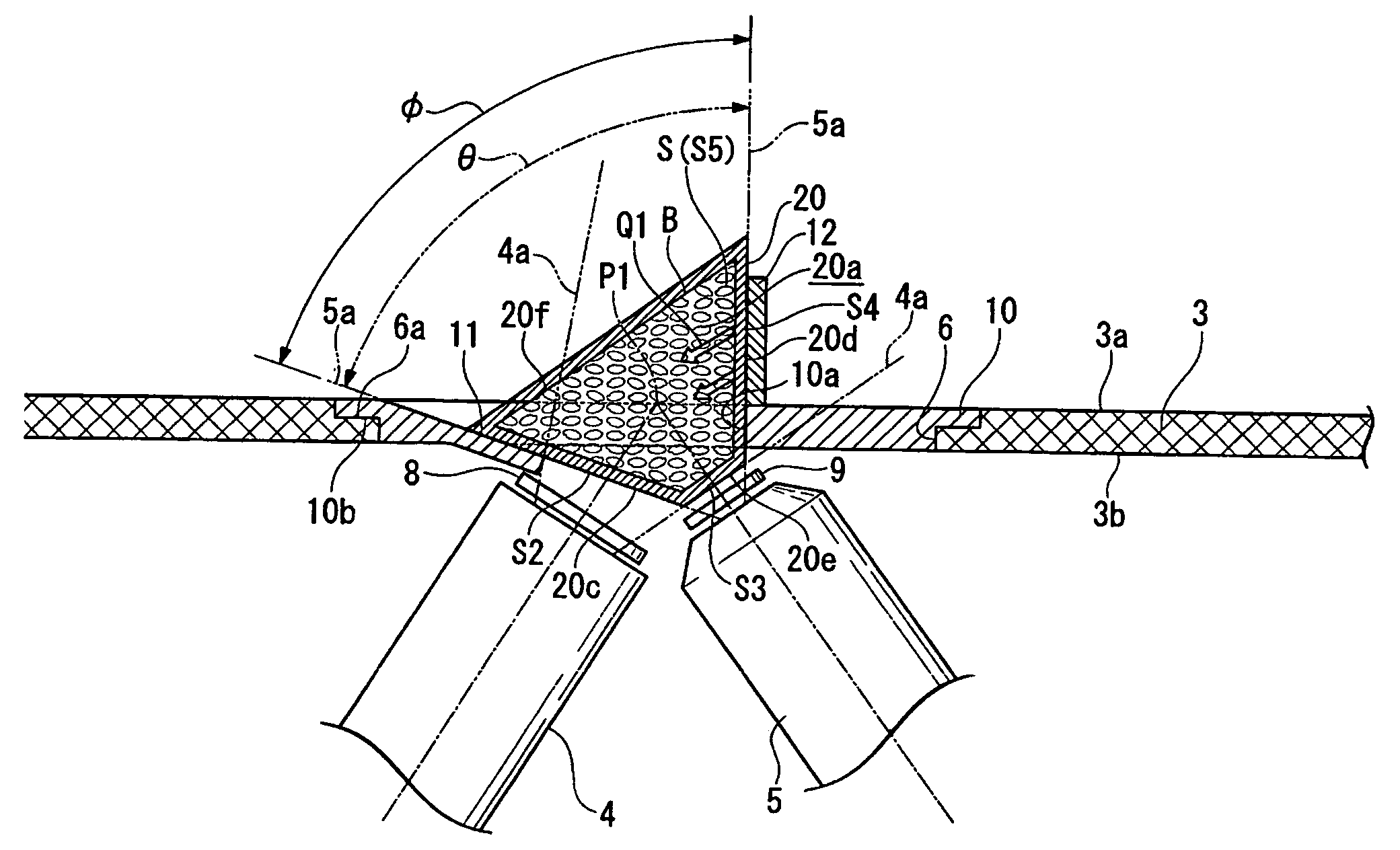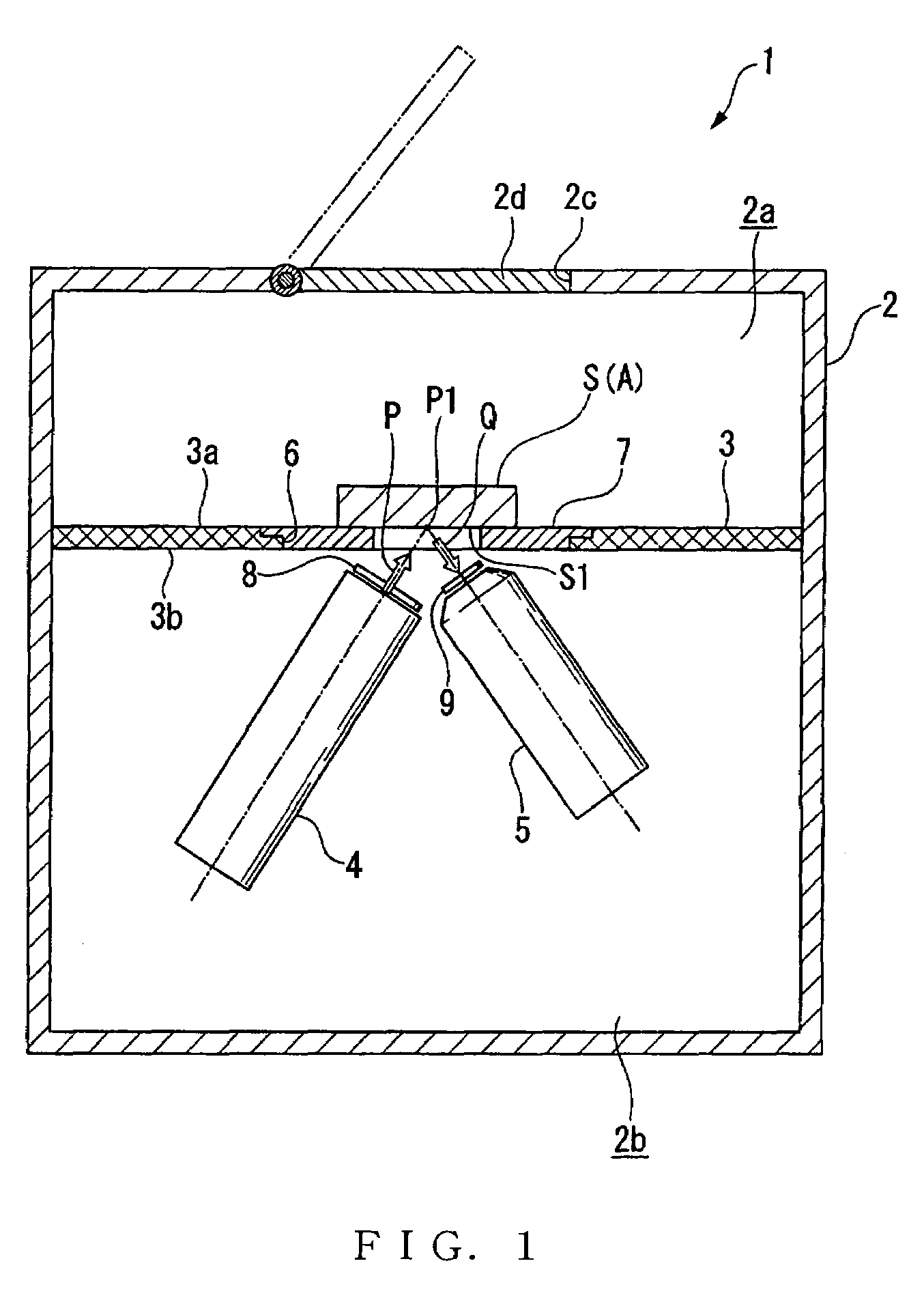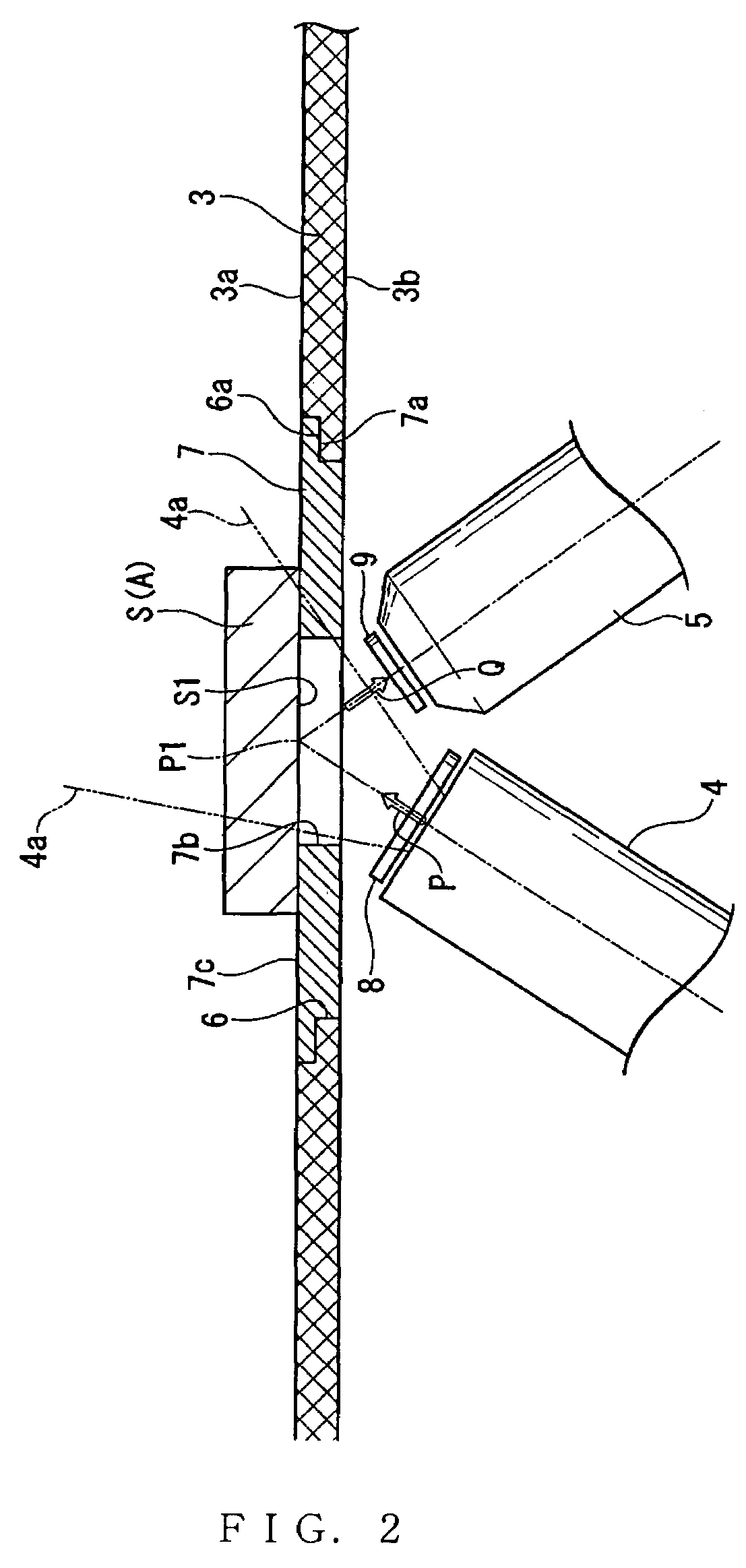Fluorescent X-ray analysis apparatus
a fluorescent x-ray and analysis apparatus technology, applied in the field of fluorescent x-ray analysis apparatus, can solve the problems of cadmium pollution of food, dependence on the operator, and the limitation of the sensitivity of a spatial limitation, so as to improve the detection lower limit, reduce the sensitivity, and efficiently detect the generated fluorescent x-ray
- Summary
- Abstract
- Description
- Claims
- Application Information
AI Technical Summary
Benefits of technology
Problems solved by technology
Method used
Image
Examples
Embodiment Construction
[0033]FIG. 1 to FIG. 4 show an embodiment concerned with this invention. As shown in FIG. 1, a fluorescent X-ray analysis apparatus 1 possesses an outer casing 2, a sample base 3 supporting a sample S, an X-ray source 4 irradiating a primary X-ray P to the sample S, and a detector 5 detecting a fluorescent X-ray Q generated from the sample S. The sample base 3 is provided in an inside of the outer casing 2, and the inside of the outer casing 2 is partitioned to a sample chamber 2a above the sample base 3, and a measurement chamber 2b in which the X-ray source 4 and the detector 5 have been disposed. In an upper part of the sample chamber 2a, an opening part 2c is formed, and a sample chamber upper lid 2d is provided so as to be openable / closable. As shown in FIG. 2, the sample base 3 has a window part 6 penetrating from an upper face 3a to a lower face 3b. And, the sample base 3 can mount the sample S to the upper face 3a as a 1st inspection position A under a state in which an irra...
PUM
| Property | Measurement | Unit |
|---|---|---|
| fluorescent X- | aaaaa | aaaaa |
| fluorescent | aaaaa | aaaaa |
| energy | aaaaa | aaaaa |
Abstract
Description
Claims
Application Information
 Login to View More
Login to View More - R&D
- Intellectual Property
- Life Sciences
- Materials
- Tech Scout
- Unparalleled Data Quality
- Higher Quality Content
- 60% Fewer Hallucinations
Browse by: Latest US Patents, China's latest patents, Technical Efficacy Thesaurus, Application Domain, Technology Topic, Popular Technical Reports.
© 2025 PatSnap. All rights reserved.Legal|Privacy policy|Modern Slavery Act Transparency Statement|Sitemap|About US| Contact US: help@patsnap.com



